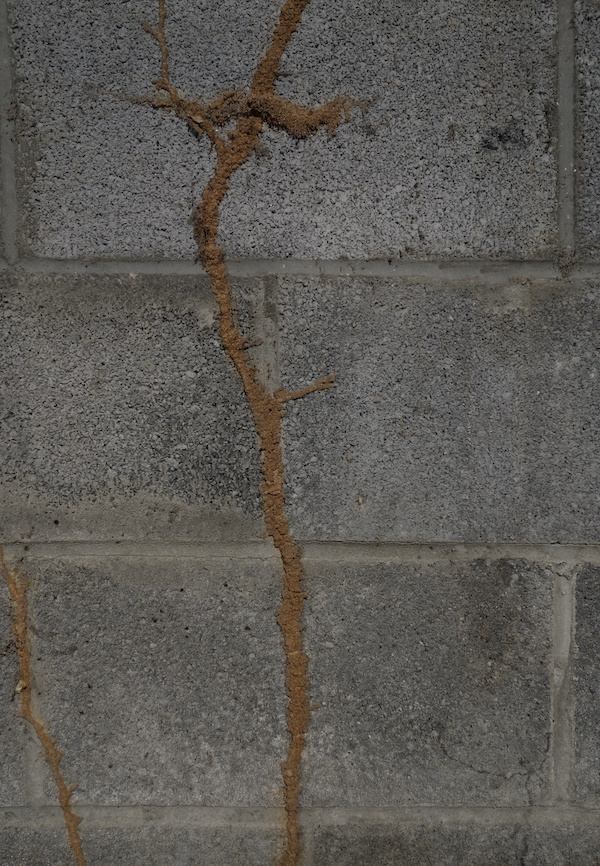Termites: a homeowner’s worst nightmare. These tiny, relentless insects often go unnoticed as they carve their silent pathways, causing extensive damage to structures without immediate detection. Understanding the significance of termite tracks, particularly their mud tubes, is essential for homeowners to promptly recognize and address potential infestations.
This informative guide aims to shed light on termite tracks, focusing specifically on their mud tubes unraveling their significance, characteristics, and implications for homeowners. Join us as we embark on a detailed exploration into the world of these subterranean architects, unveiling the secrets behind their mud tube constructions and the measures to combat termite threats.
Understanding Termite Habits and Impact on Structures
Termites, often referred to as “silent destroyers,” have certain habits and behaviors that make them a persistent threat to the integrity of structures. These wood-eating insects thrive in dark, humid environments, displaying communal behaviors within their colonies while remaining relatively unseen by homeowners.
- Colony Structures: Termite colonies have various castes, including workers, soldiers, and reproductive members. Workers, responsible for foraging and constructing termite tracks like mud tubes, tirelessly search for cellulose-based materials to sustain the colony.
- Feeding Habits: Termites feed on cellulose found in wood, paper, and various plant-based materials. Their insatiable appetite for cellulose-rich sources drives them to invade wooden structures, causing structural damage over time.
- Impact on Structures: Termite infestations can compromise the structural integrity of buildings and homes, leading to severe damage if left unchecked. These pests consume wood from the inside out, hollowing structural elements like beams, joists, and wooden foundations, jeopardizing the stability of the property.
- Signs of Infestation: Aside from termite tracks in the form of mud tubes, signs of termite infestations include hollow-sounding wood, discarded wings near windowsills or door frames, or visible damage resembling water damage in wooden structures.
Decoding Termite Tracks: Understanding Mud Tubes and Their Significance
Termite tracks, notably their mud tubes, are intricately constructed pathways that serve as vital conduits for termites, enabling their movement between nests and food sources. These tubes, often composed of soil, wood particles, saliva, and excrement, provide termites with shelter and moisture, facilitating their colonization and foraging activities.
The construction of mud tubes is a hallmark of subterranean termite species, such as the Eastern Subterranean Termites (Reticulitermes flavipes), which frequently infest homes and structures. In their pursuit of cellulose-based materials for sustenance, these termites create protective passageways that extend from the ground to potential food sources, safeguarding them from predators and maintaining optimal environmental conditions.
Identifying mud tubes is crucial in detecting potential termite infestations early. Homeowners should conduct thorough inspections, especially in areas vulnerable to termite intrusion, such as basements, crawl spaces, or foundation walls.
Preventing Termite Intrusion: Maintenance and Proactive Measures
Preventing termite intrusion requires a proactive approach emphasizing preventive measures and regular maintenance.
- Moisture Control: Termites thrive in moist environments. Addressing moisture issues around the house by fixing leaks, improving ventilation, and ensuring proper drainage helps reduce the property’s attractiveness to termites. Regularly inspecting and repairing leaks in plumbing, roofs, or AC units is crucial.
- Wood-to-Ground Contact: Eliminating direct contact between soil and wooden structures helps deter termites. Ensure wooden elements like fences, decks, or exterior structures don’t directly touch the ground, as this can serve as entry points for termites.
- Regular Inspections: Conduct routine inspections of the property and focus on vulnerable areas where termites could frequent. Professional pest inspections can detect early signs of termite activity, enabling timely intervention.
- Termite-Resistant Materials: Consider using termite-resistant materials for construction or renovation. Using treated wood or materials less attractive to termites for building or repairs can deter termite infestations.
Managing Termite Infestations: Early Detection and Effective Treatments
Early detection of termite infestations can minimize structural damage and mitigate the spread of colonies. Homeowners should remain vigilant for signs of termite tracks, particularly mud tubes, and seek immediate intervention upon detection.
- Timely Intervention: It’s crucial to take swift action after spotting termite tracks or suspected infestation signs. Delaying treatment can further escalate the damage and lead to costly repairs.
- Localized Treatments: Pest control experts employ various treatment methods tailored to the extent of infestation. Localized treatments may include termiticide applications, baiting systems, or targeted extermination methods to eliminate termite colonies effectively.
- Comprehensive Extermination: For extensive infestations, comprehensive extermination measures may be necessary. This can involve tenting or fumigation to eradicate termites in hard-to-reach areas within the structure. Pest control professionals employ these methods precisely, ensuring minimal disruption to homeowners.
- Post-Treatment Monitoring: Following treatment, regular monitoring is essential to ensure the efficacy of the applied measures. Pest control experts conduct follow-up inspections to assess the success of treatments and implement additional measures if needed.
- Professional Expertise: Termite infestations need more than a DIY fix, so you’ll need the expertise of a pest control professional to help you along. These specialists possess the knowledge, experience, and access to advanced technologies required for efficient termite control.
Eliminate Termites with United States Pest Service
When it comes to protecting your home from termite infestations, trust and swift action are pivotal. At United States Pest Service, we understand the urgency of termite infestations.
Contact us as soon as you notice termite tracks or any indications of infestation. Let’s work together to preserve the integrity of your home!

